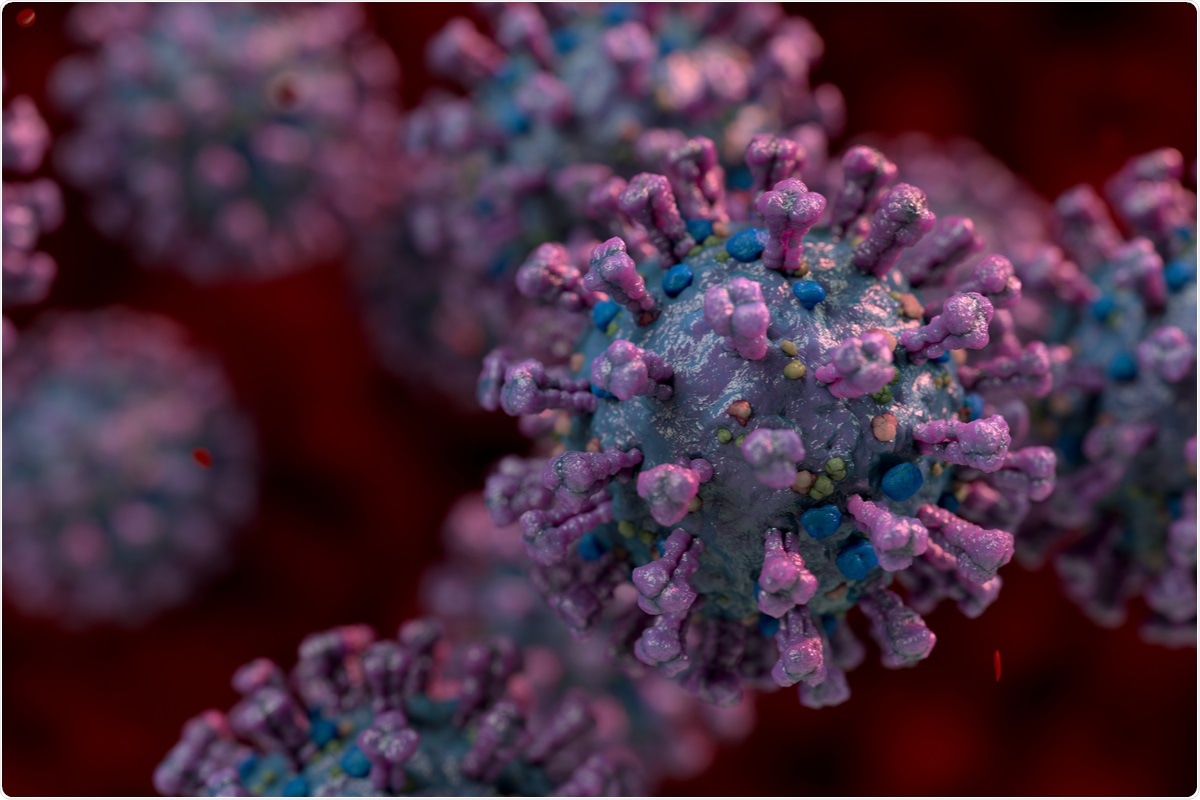Invalidation of potential SARS-CoV-2 protease inhibitors

Scientists worldwide have been working at an unprecedented speed to develop various means to contain the coronavirus disease 2019 (COVID-19) pandemic. This pandemic has been caused by the rapid spread of severe acute respiratory syndrome coronavirus-2 (SARS-CoV-2). This pandemic has shed light on the urgent need to develop broad-spectrum antivirals that could be used as the first line of defense for this pandemic and future outbreaks.
 Study: Validation and invalidation of SARS-CoV-2 papain-like protease inhibitors. Image Credit: Ninc Vienna/ Shutterstock
Study: Validation and invalidation of SARS-CoV-2 papain-like protease inhibitors. Image Credit: Ninc Vienna/ Shutterstock
SARS-CoV (severe acute respiratory syndrome coronavirus), SARS-CoV-2, and MERS (Middle East respiratory syndrome) belong to the genus betacoronavirus. Scientists have found 86% genomic similarities between SARS-CoV-2 and SARS-CoV. Therefore, previous studies on the viral pathogenicity of SARS-CoV render a rapid understanding of the SARS-CoV-2 transmission mechanisms. Although SARS-CoV and MERS-CoV showed higher mortality rates than SARS-CoV-2, the transmission rate of SARS-CoV-2 is much higher than the other two members of betacoronavirus, stated above.
Background
SARS-CoV-2 expresses two viral cysteine proteases during viral replication, namely, the main protease (Mpro; nsp5) and the papain-like protease (PLpro; nsp3). Both these proteases have been validated as antiviral targets. Earlier studies have shown that PLpro and Mpro cleave viral polyproteins at specific sites to develop functional viral proteins for the assembly of the viral replication complex. As Mpro is a more amenable drug target than PLpro, it has become the prime target for designing novel COVID-19 drugs.
Drug repurposing and rational design revealed that disparate compounds could be used as Mpro inhibitors. Many compounds were initially reported as Mpro inhibitors but later they were proved to be promiscuous cysteine modifiers. However, many Mpro inhibitors have also been validated as specific inhibitors, and animal model studies have revealed their antiviral properties. Recently, two Pfizer Mpro inhibitors, PF-07304814 and PF-07321332, have progressed to human clinical trials.
In addition to cleaving the viral polypeptide at three different sites during viral replication, PLpro also modulates host immune response by cleaving host proteins' ubiquitin and ISG15 (interferon-induced gene 15). Compared to Mpro inhibitors, very few PLpro inhibitors have been developed. Although previous studies had shown naphthalene-based GRL0617 series of compounds as PLpro inhibitors, their pharmacokinetic properties, and antiviral property need further validation via in vivo animal model study. One of the reasons for scarcity in the development of PLpro inhibitors is due to the presence of various challenges associated with it; for instance, the presence of P1 and P2 binding pockets creates difficulties in developing potent PLpro inhibitors.
A new study
In a previous study, scientists performed several high throughput screenings and had identified novel PLpro inhibitors. In this study, they identified several structurally disparate compounds that can inhibit the viral protease PLpro. To determine whether the identified PLpro inhibitors are truly effective and should be further investigated, researchers have validated/invalidated the list of PLpro inhibitors using a combination of orthogonal assays. Some of the assays include the cell-based FlipGFP assay, activity-based FRET enzymatic assay, and the thermal shift binding (TSA) assay. This study is available on the bioRxiv* preprint server.
Previous studies have indicated that many Mpro inhibitors, including ebselen, carmofur, disulfiram, and shikonin, are promiscuous non-specific cysteine protease inhibitors. The current study showed that all the above candidates showed a weak mechanism of action and were not recommended for further studies. Similarly, cryptotanshinone, tanshinone I, dihydrotanshinone I, and tanshinone IIA, which were previously reported as potent SARS-CoV PLpro inhibitors, could also inhibit SARS-CoV Mpro. The dual inhibitory activities of these compounds coupled with the weak PLpro enzymatic inhibition indicated that they might have a promiscuous mechanism of action.
This study found that non-GRL0617-based PLpro inhibitors had weak enzymatic inhibition and no cellular PLpro inhibition. This means these compounds should not be regarded as PLpro inhibitors. High-throughput screening of over 6,000 bioactive compounds, which utilized quenched fluorescent substrate RLRGG-AMC, had identified four potent PLpro inhibitor compounds, namely, YM155, cryptotanshinone, tanshinone I, and GRL0617. Interestingly, plaque reduction assay revealed cryptotanshinone, YM155, and tanshinone l could inhibit SARS-CoV-2 replication in Vero E6 cells. The current study also revealed that SARS-CoV-2's cysteine proteases, namely, Mpro and PLpro, are prone to non-specific inhibition via alkylating agents or re-dox cycling compounds. Additionally, TSA binding assay revealed that all compounds either had no effect or destabilized PLpro.
Conclusion
Drug repurposing has helped accelerate the process of drug discovery since it can potentially dodge lengthy safety tests before entering clinical trials. However, the identified hit must be thoroughly characterized to validate the target specificity. Many studies are available that have reported several Mpro and PLpro inhibitors which are not worthy of clinical studies. Therefore, researchers of the current study performed a validation/invalidation of existing articles associated with Mpro and PLpro inhibitors.
Scientists showed that the identified compounds had significantly reduced enzymatic inhibition against PLpro compared to reported values. The study recommended that more research is required to determine effective Mpro and PLpro inhibitors that could be used to fight COVID-19 infection.
*Important Notice
bioRxiv publishes preliminary scientific reports that are not peer-reviewed and, therefore, should not be regarded as conclusive, guide clinical practice/health-related behavior, or treated as established information.
- Ma, C. and Wang, J. (2021) Validation and invalidation of SARS-CoV-2 papain-like protease inhibitors. bioRxiv. doi: https://doi.org/10.1101/2021.11.04.467342 https://www.biorxiv.org/content/10.1101/2021.11.04.467342v1
Posted in: Medical Science News | Medical Research News | Disease/Infection News
Tags: Animal Model, Assay, Cell, Coronavirus, Coronavirus Disease COVID-19, Cycling, Cysteine, Drug Discovery, Drug Repurposing, Drugs, FRET, Gene, Genomic, High Throughput, High-throughput screening, Immune Response, in vivo, Interferon, MERS-CoV, Mortality, Pandemic, Research, Respiratory, SARS, SARS-CoV-2, Severe Acute Respiratory, Severe Acute Respiratory Syndrome, Syndrome, Ubiquitin

Written by
Dr. Priyom Bose
Priyom holds a Ph.D. in Plant Biology and Biotechnology from the University of Madras, India. She is an active researcher and an experienced science writer. Priyom has also co-authored several original research articles that have been published in reputed peer-reviewed journals. She is also an avid reader and an amateur photographer.
Source: Read Full Article




